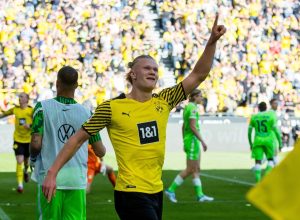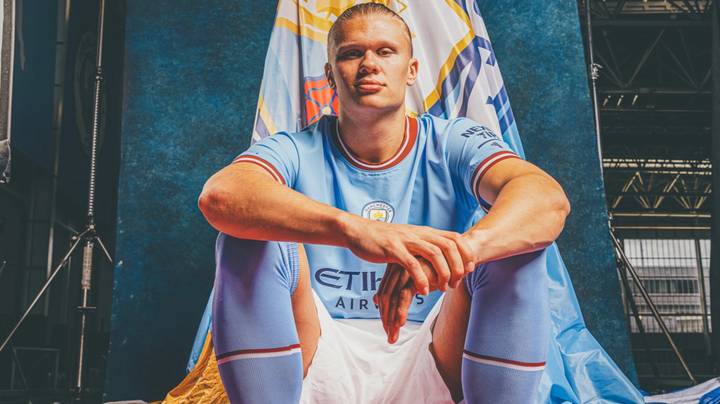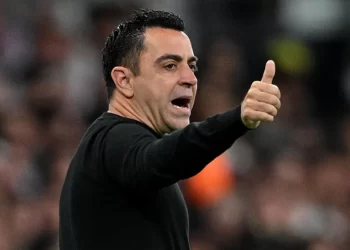
In more settled play, however, Haaland found the most success running beyond the opposition line in anticipation of balls in behind. Bundesliga defences play with lines that are higher on average than most Premier League, but Haaland does not need a vast amount of space to make defences pay. At Dortmund he played with quality chance creators like Jadon Sancho and Marco Reus, this, combined with the ability of other players such as Emre Can and Mats Hummels to go direct, with accurate long balls shaped the Norwegian’s tendencies.
Guardiola has had experience playing with a recognized striker at City having used Sergio Aguero and Gabriel Jesus many times as the focal point of the attack. However, these strikers (Jesus more than Aguero) ended up being involved with build-up play, dropping back to link up with midfielder and drawing defenders out of position.
Haaland has not yet shown an inclination towards that, he prefers to move around in the neighbourhood of the opposition centrebacks, keeping them occupied and preventing them from stepping up much. This ends up creating space in the middle of the park for his midfielders but perhaps, more importantly, it puts him in the best position to make those aggressive runs in behind.
The quintessential Erling Haaland most likely involves a direct run in between the opposition centrebacks, a ball through or over the top of the defence, a competent first touch, the setup for and then a sweeping left foot finish into the bottom left corner. With de Bruyne, Foden, Bernardo Silva and many others at his service, we will most likely be treated to this finish many times over the coming season.
These players will very lucky to have the now 6 foot-4 phenom on the end of their passes. Haaland makes full use of his upper body strength, holding off defenders and finishing with great poise and composure; Dayot Upamecano can attest to that fact. Even at that size, Haaland is fearfully quick. He was the third fastest player in last season’s Bundesliga at a speed that would have also put him in the Premier League’s top three. A 22-year old monster as tall as Virgil van Dijk and quicker than most of the league is a frightening prospect to consider.
What fascinates me most, however, is how Guardiola uses Haaland against defences that sit deep and keep multiple bodies in the Norwegian’s vicinity. In such situations, there would be a much smaller risk of Haaland exploiting the space in behind with his pace. This may require City to tweak their approach slightly in order to get the best out of Haaland. Another possibility is for Haaland to slightly modify or rather lean into his qualities that most suitably complement his teammates. Haaland scored 14 out of his 86 Dortmund directly from cutbacks, a modus operandi that is all too familiar to Guardiola and Manchester City.
Smart, instinctive movement to attack either the near or far post and quick reactions once the ball is put across have made Haaland elite at that situation even though it was not one Dortmund systematically created. At his size as well, he is just a very big target and sometimes it is that simple. Haaland scored just about seven headed goals in his two Dortmund seasons, and this is a strength of his that has probably been underutilized to this point. And no, I am not advocating for Manchester City to start lobbing crosses into the Norwegian like an all-star Burnley side, but it puts another arrow into a quiver that could have done with a few more options.

Surely Guardiola and City are holding on to the belief that much like everywhere else he has been, the Norwegian menace will waste no time doing what he does best; scoring goals, loads and loads of goals.














